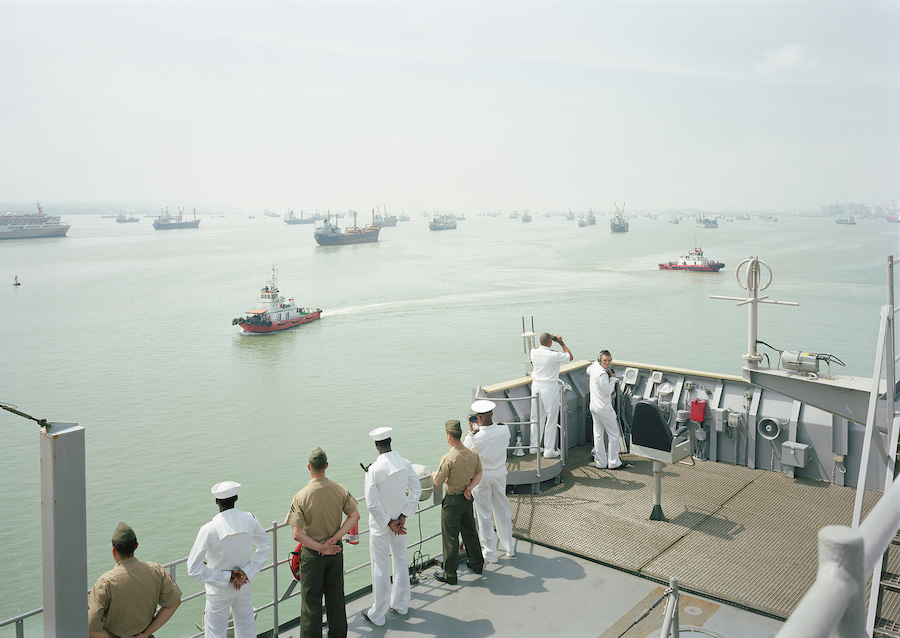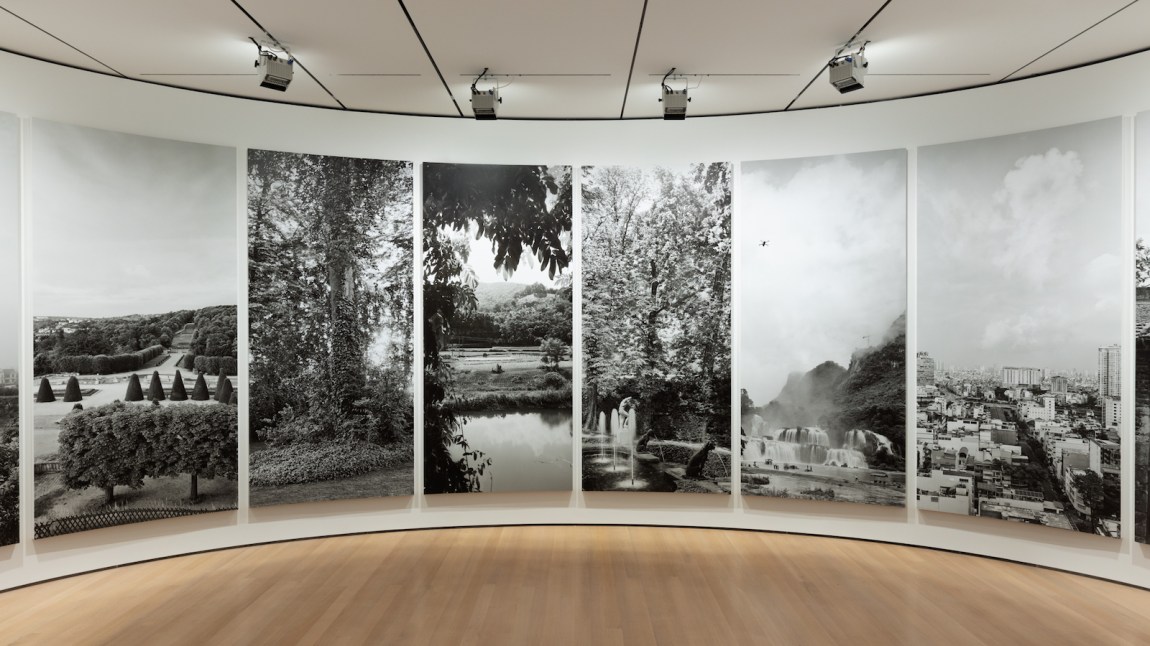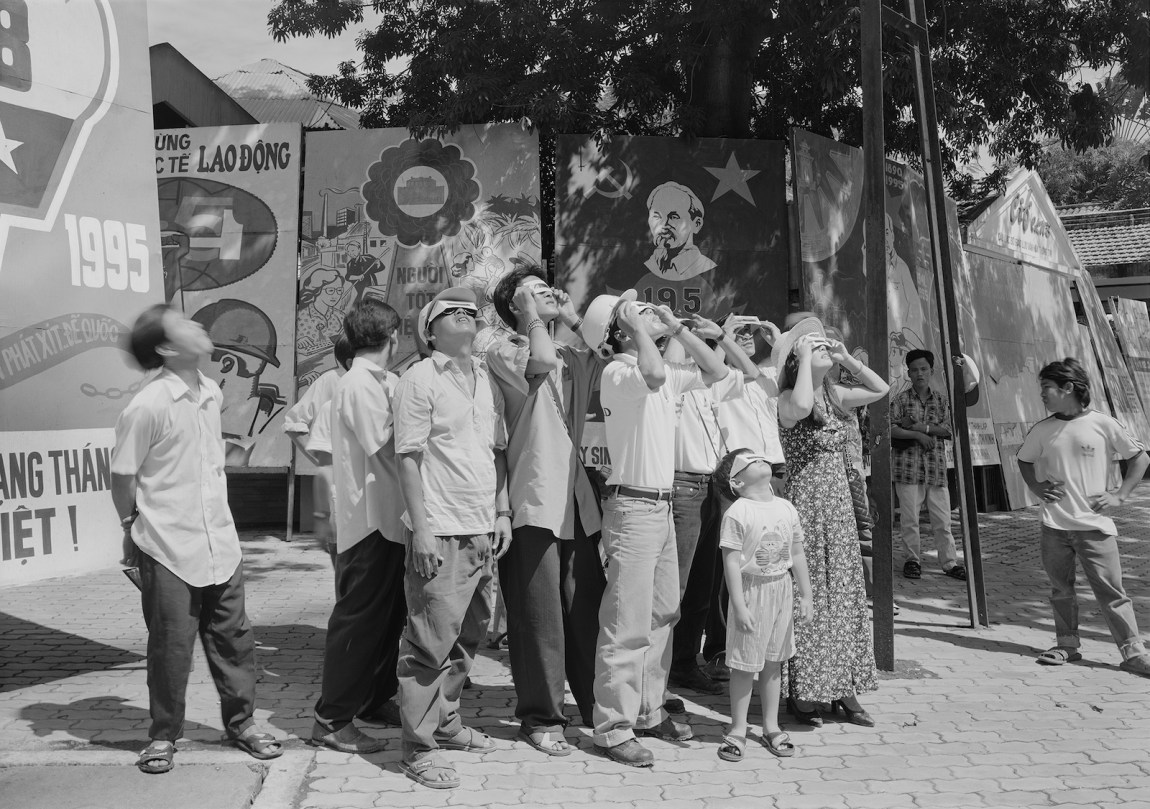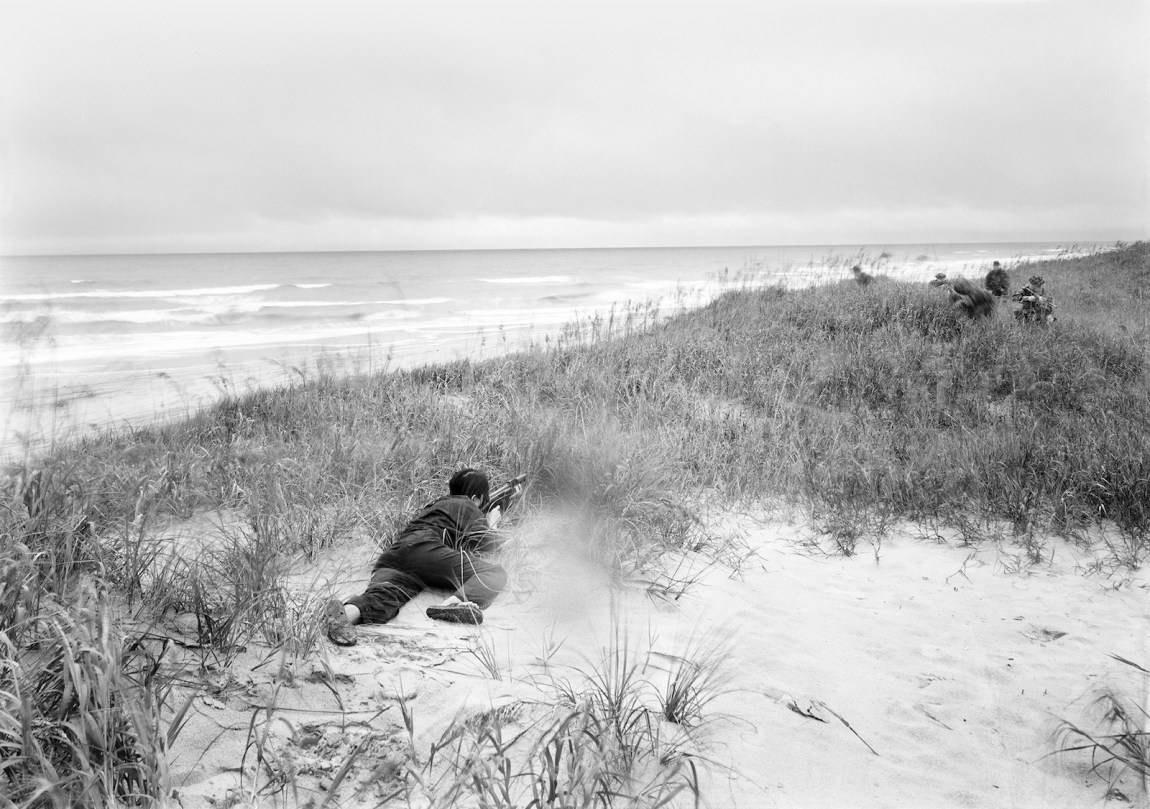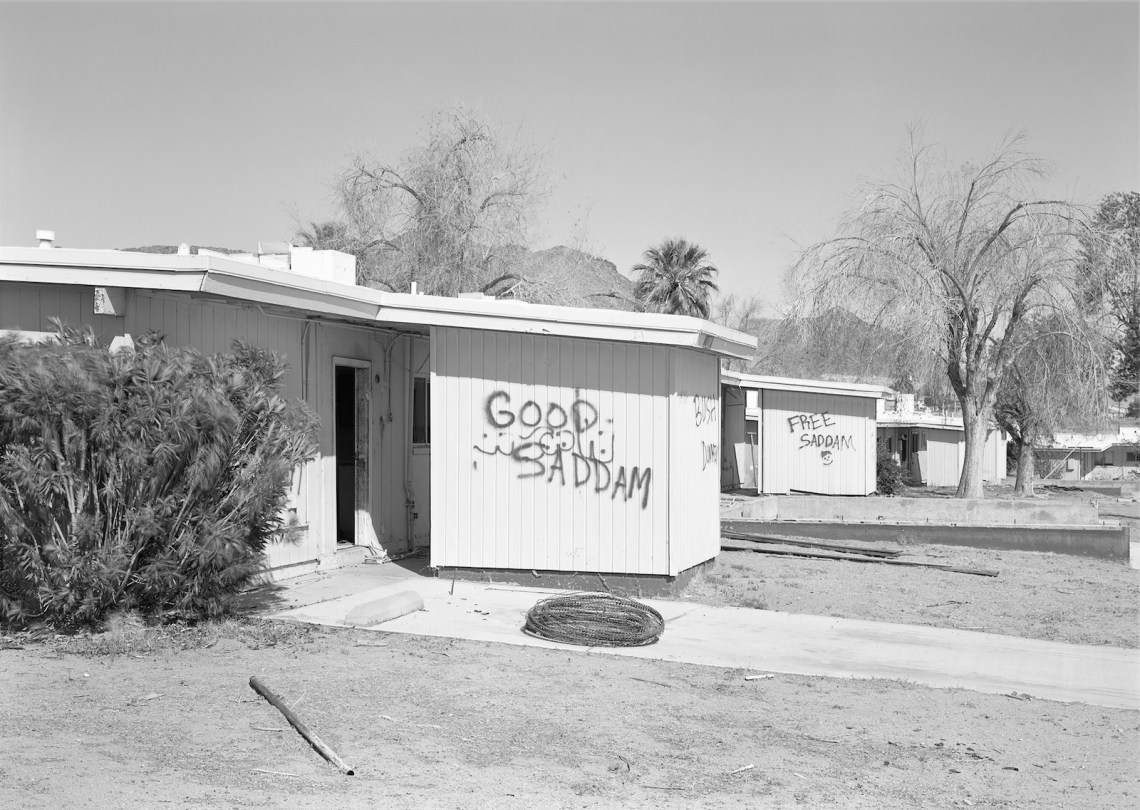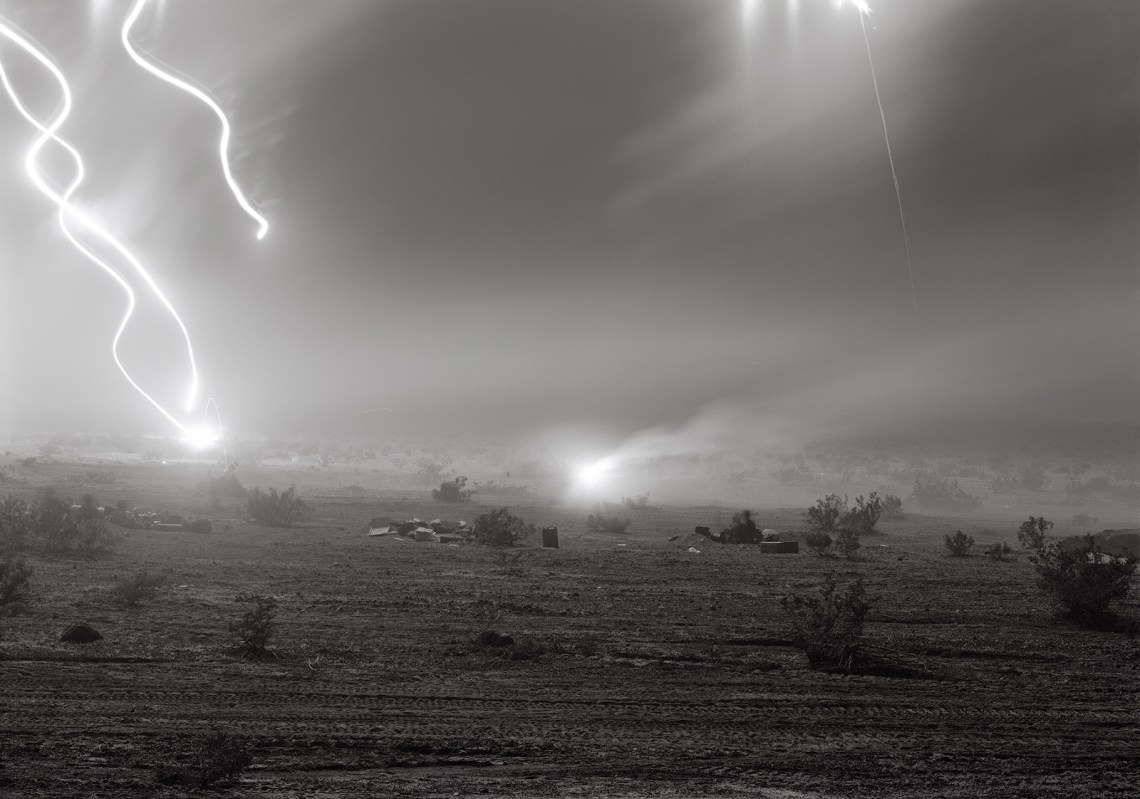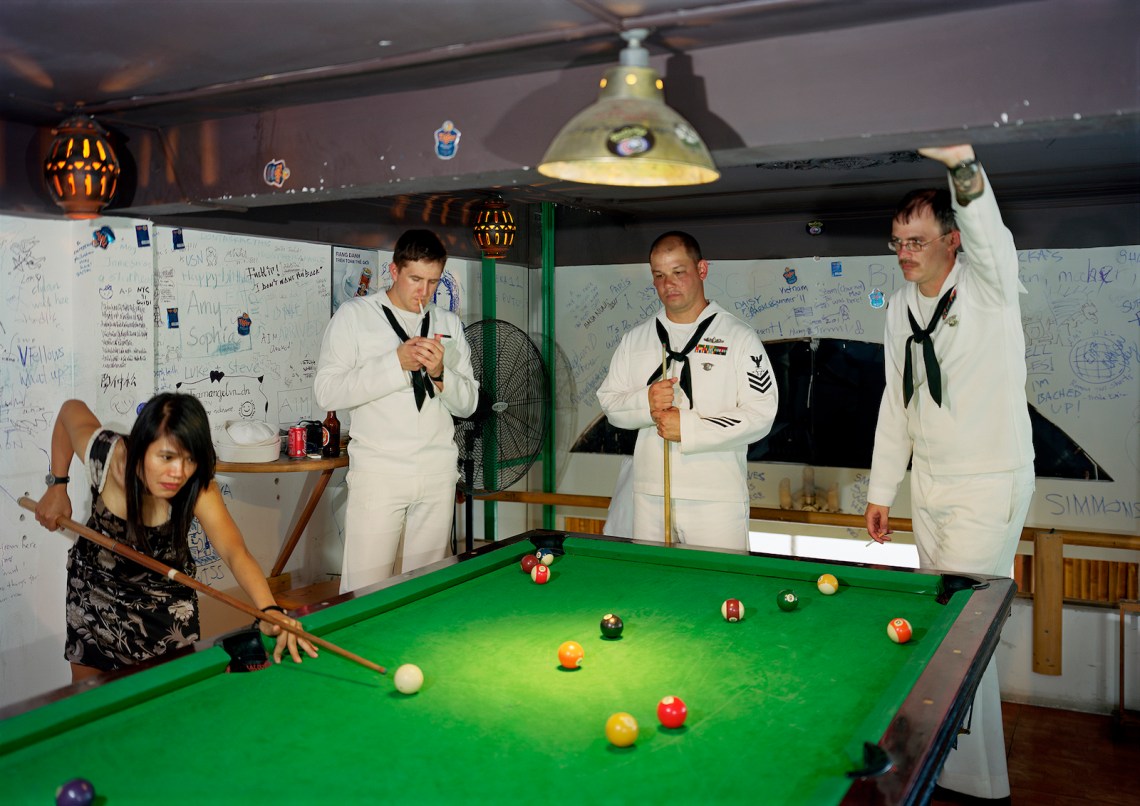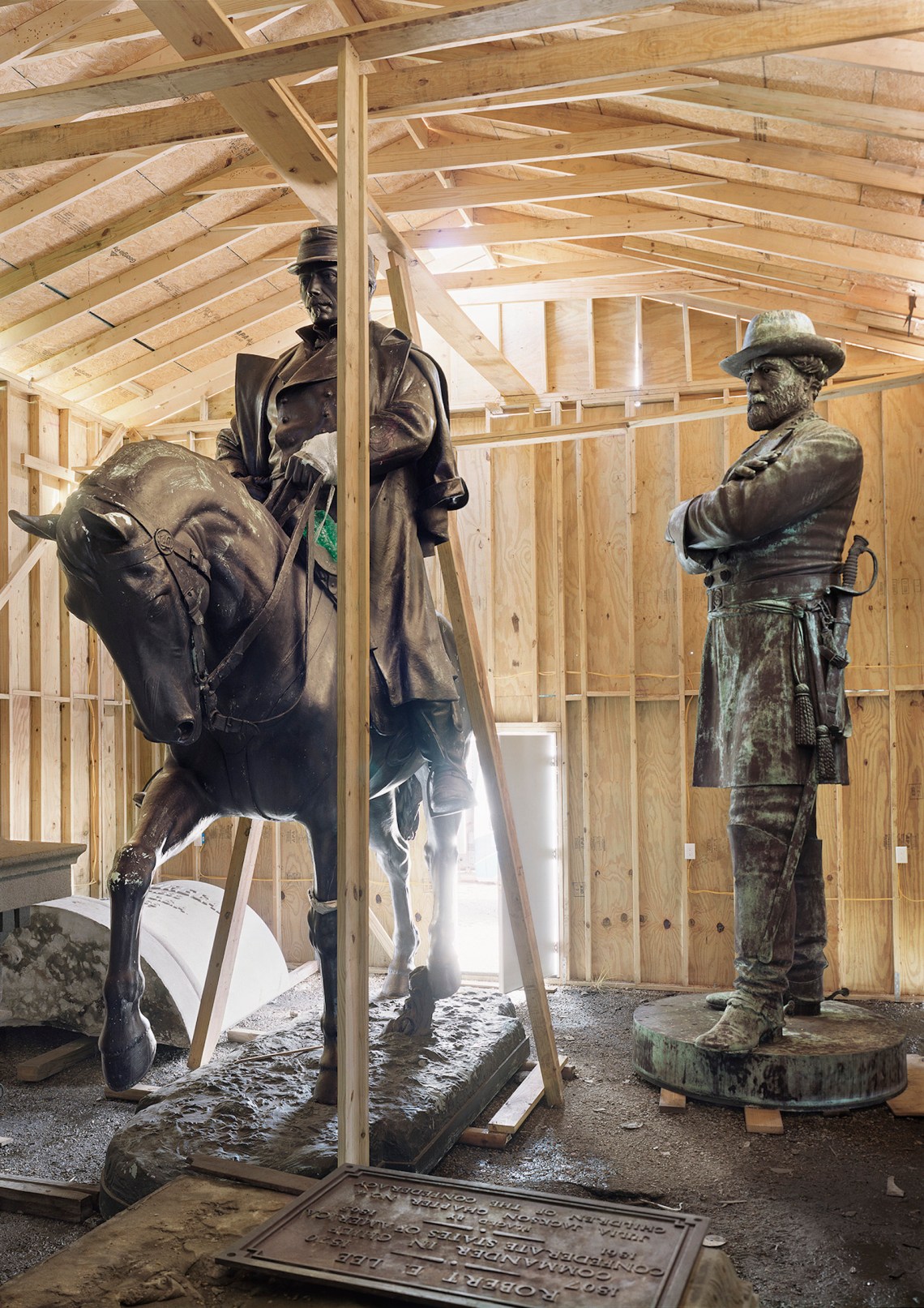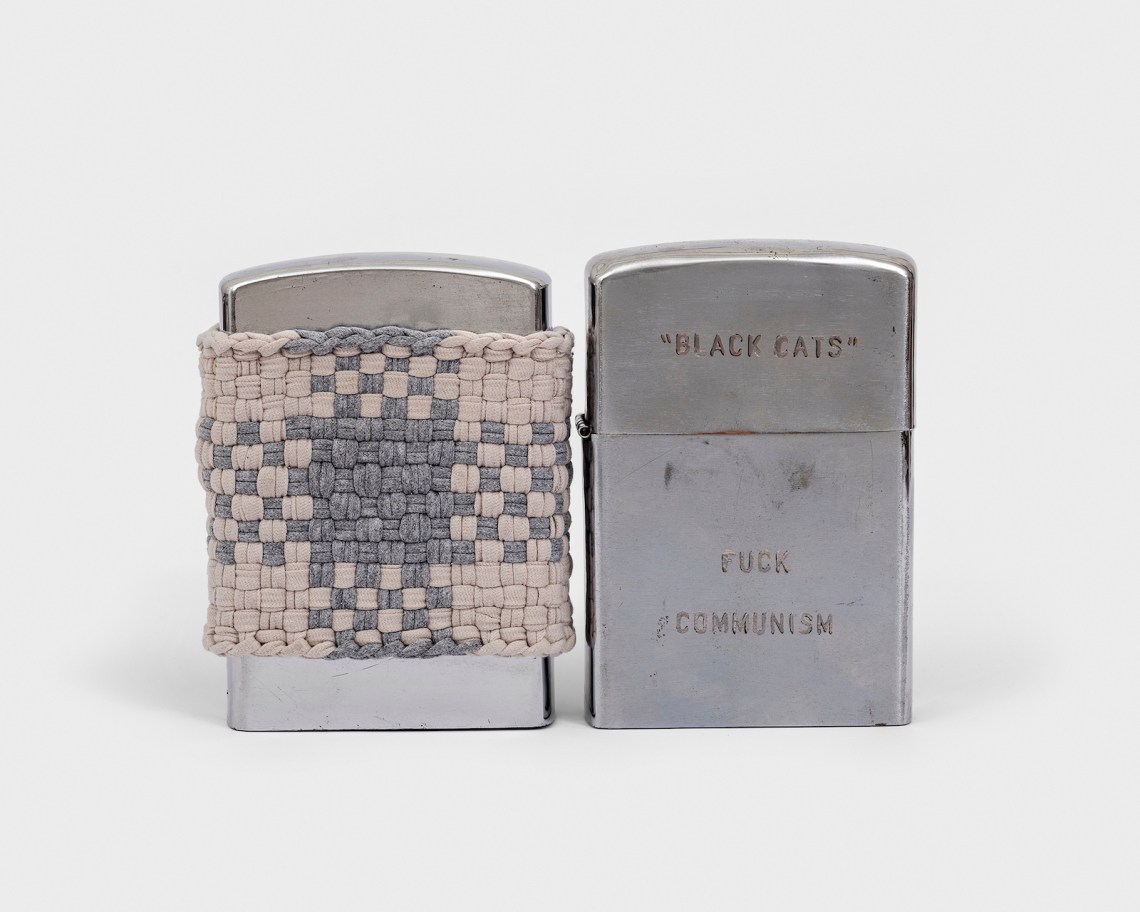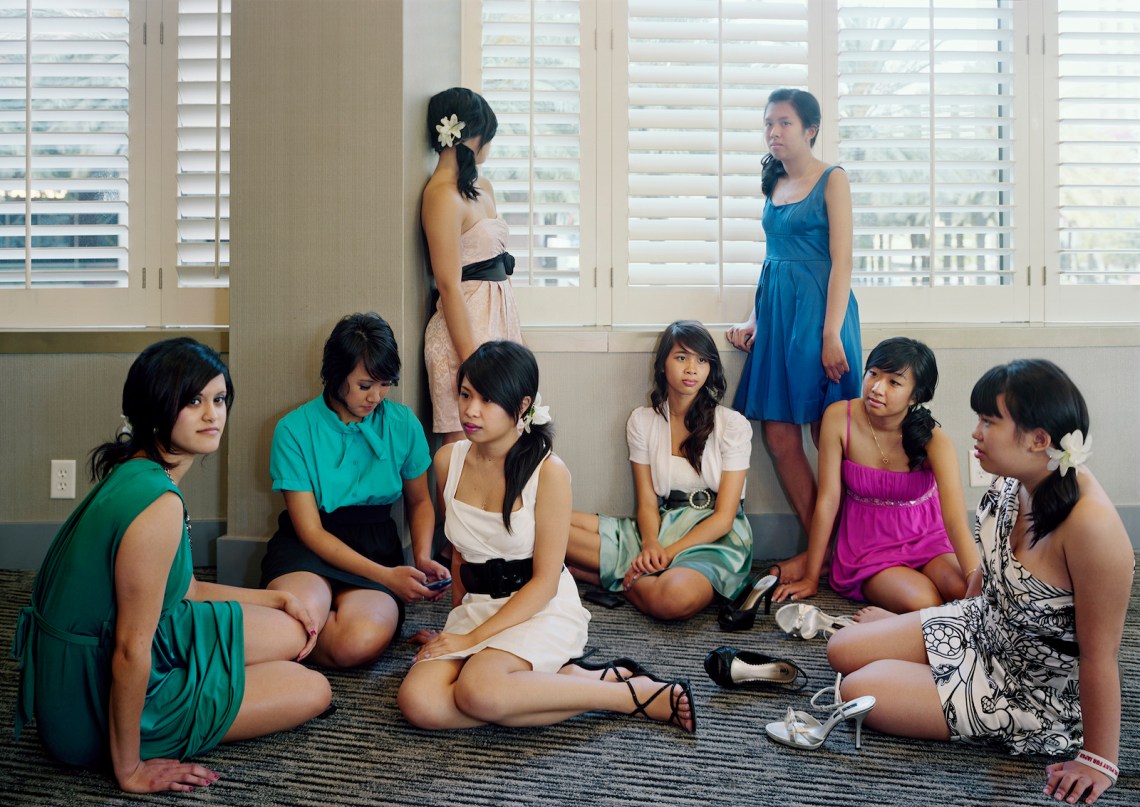In 1886 an enormous panoramic painting called The Battle of Atlanta opened in Minneapolis. It was a cyclorama, a popular form of precinematic mass spectacle in which viewers stood inside a rotunda surrounded by a giant, slowly rotating circular painting. Sometimes a little shrubbery was brought in to lend credence to the foreground; sometimes there was narration, or music. War was a common subject, most often the Civil War. As Scientific American remarked that year, describing a different cyclorama depicting the battle of Gettysburg, the goal was “that the spectator loses all orientation, and cannot tell north from south. While looking at the picture, he must live in its scene.”
The Battle of Atlanta took a large team of German painters to finish. It freezes what was an eventual one-day Union rout at a single moment: 4:45 PM. Viewers in the North thought it represented the Union’s victory, while viewers in the South noted that it showed the battle at the point when the Confederate Army might have prevailed. The painting not only represented a war but became the battleground on which that war continued, as the historian Daniel Judt has written.1 Think of it: the Union and Confederate armies rotating around and around over the decades, meanings recycling without ever resolving. As with all cycloramas, what at first seems like a live world of illusion turns out to be a closed loop.
A cyclorama is the centerpiece of the photographer and artist An-My Lê’s new retrospective at MoMA, “Between Two Rivers/Giữa hai giòng sông/Entre deux rivières.” Fourteen Views (2023) is built into an oval-shaped gallery, which is covered from floor to ceiling in black-and-white images of Louisiana, Vietnam, and France. What first seems to be a series of discrete images merges, as you linger, into a harmonious aesthetic vision: the waterways of Ninh Bình province blend into the Bayou St. John, the buildings of Hanoi mirror the topiaries of the classic gardens outside Paris, the sculpted fountains of Saint-Cloud become the Bản Giốc waterfalls, the burning smoke of the sugar cane becomes the clouds over New Orleans’s lower ninth ward.
The landscapes in Fourteen Views are personal for Lê, who was born in Vietnam, studied in the United States (where she now lives), and spent her formative years working in Paris. Her life has been lived in the geography created by French colonialism and American militarism. Yet she has never been interested in didactic work or large-scale political statements; instead she is drawn to what she calls the “complicated beauty” of how history, even violent history, is layered onto the present. In this piece, and in her work generally, Lê deploys the forms of spectacle that have been devoted to trapping history in place—the cyclorama, landscape painting’s images of unpeopled lands, war reenactments, sexploitation films—yet never gives in to their myopic vision. Instead she uses these tools of the imperial eye to assemble a subtle anti-imperial aesthetic, preserving the distinctness of the places she depicts even as she brings them together.
*
The two rivers of the exhibition’s name are the Mississippi and the Mekong. Lê was born in 1960 in Saigon in South Vietnam, spent part of her early adolescence in Paris, where her mother studied at the Sorbonne, and returned home in 1973. Two years later, her family fled on one of the last American planes to leave the city as it fell to the communist North Vietnamese forces. They landed, eventually, in California. Ever since, Lê has approached her subjects from within the glimmering diasporic triangle that connects the United States, Vietnam, and France.
As a graduate student at Stanford, Lê switched from a degree in biology to photography. In 1986 she returned to Paris, where she created images for the French craftsman’s guild. In her spare time, she combed through France’s photographic archives, lingering over colonial images of Indochine française. She half-remembered Vietnam, but she also learned to know it through American films and American eyes, French colonial images and French fantasies.2 This sense of being both within and without, of approaching a place through layers of stories and imaginings, informs all her work.
Her first two series, Small Wars (1992–2002) and Viêt Nam (1994–1998), are devoted to what she calls the “Vietnam of the mind.” Small Wars follows a group of Vietnam War reenactors staging skirmishes and patrols in Virginia’s pine forests; Viêt Nam was conceived when Lê returned to her birthplace after nineteen years away, the US trade embargo finally lifted. Trying to see her former home again, she travelled to different parts of the country, photographing kids playing ball in Hanoi, the rural vegetable gardens of the Mekong Delta, kite-flying in Ho Chi Minh City. Working, as she knew she was, in a place to which so many fantasies had accrued during the colonial era and the cascade of wars that followed, Lê would often stage her subjects or ask them to pose. Stories, she knows, are stacked on top of people and places, and referents fly thick and fast. Lê can be slyly funny in this regard: she restages Eugene Atget’s 1912 image of Parisian eclipse-watchers in 1995 in Ho Chi Minh City.
Advertisement
Selections from both these early series line the opening galleries at MoMA. They were made with a wide-angle camera and developed as gelatin silver prints, producing images that are both delicate and solid as well as precise. It seems possible to see the shadow of every leaf, each strand of a girl’s hair. “I began making photographs that use the real to ground the imaginary,” Lê once told Hilton Als in an interview.
The pictures have a fairytale quality; it is as if Lê is trying to photograph a memory she doesn’t know how to tell. Perception skews. In the Mekong Delta, a family poses in front of their duck pond while trees wave in the wind and white ducks swirl into a small canal running up the right side. Elsewhere a small child holds a bamboo rod that bends impossibly across the river and into the foreground, as if connecting with the viewer. Lê’s allowance for blurred movement paradoxically creates a feeling of stillness.
In Small Wars, this precision makes the photographs seem to float. The wartime scenes are staged by the reenactors and then restaged by Lê: a bivouac, a dramatic air rescue, the boredom of patrolling. With the actual war, and Vietnam itself, at such a remove, it is the Virginia forest that inexplicably becomes Lê’s subject, growing over the longings and martial fantasies of these men; flowing grass overtakes their faux patrols and the details of each leaf upstage their Army cots. The war here is adamantly in the space of memory and imagination, held by the landscape rather than—as it once did across the Pacific—desecrating it.
It would be too easy to make fun of these men playing at a war most of them never fought, as many critics have done, to imagine them all as war junkies, lost boys, white supremacist gun-lovers. Some definitely are, but many definitely aren’t, and to dismiss them as oddities would miss the point entirely. As Lê has explained in interviews, they had varied reasons for what they were doing, many of them quite personal—as did she herself. “In a way,” she told Als, “we were all artists trying to make sense of our own personal baggage.”
As a condition of photographing the reenactment, Lê was asked to participate, often as a Viet Cong “sniper girl” or as an informant. She threw herself into the spirit of the role. There are photographs of her lying on a dune, on a hillside, waiting to ambush; of her sitting quietly on a sun-dappled log, showing a soldier a notebook in the way a Vietnamese informant or double agent might have done. A small war is underway here, too, in peacetime Virginia. Together the two series show how the Vietnam War ripples out through time like the currents in a pond after a stone is thrown, its memory and meaning bouncing against the shore and returning, now changed, back to the scene of the original event.
*
Because of these early series, Lê has often been seen as a photographer of war. But her true subject is neither war nor trauma. (Indeed, she has said as much, in a discussion with Viet Thanh Nguyen.)3 It is something closer to her own experience of the Tet Offensive. She was an eight-year-old in Saigon when North Vietnamese forces launched a simultaneous attack on cities and targets across the South:
I was in Vietnam in 1968 and experienced the Tet Offensive, although I was dragged to the back of the apartment and couldn’t really see anything. I just saw the aftermath and I could hear everything that was going on.
Lê’s lifelong fascination has been with seeing the aftermath: with hearing how the soundtrack of past wars plays on in the present, with questioning how and why all of us are drawn, like audiences to the cyclorama, to stage and restage war. Her subject matter extends far beyond the “war zone” to the bases, bars, stories, and erotic fantasies that create shadow worlds and connect disparate geographies—the jungles of Vietnam melting into the pine woods of Virginia, French Louisiana blending into Vietnam into France.
Advertisement
Or the recreation of the Middle East in California’s inland empire. For Twentynine Palms (2003–4) Lê followed Marine recruits into a combat center in the Mojave Desert as they trained for service in Iraq and Afghanistan. The series makes for a revealing contrast with Small Wars and Viêt Nam. Too much and not enough is in focus here: at a briefing, camo’ed arms and legs transform into the rubble of a hillside. Abandoned barracks spraypainted with nonsensical Arabic and syntactically odd slogans in English (“Good Saddam”) bake in the sun. There is no depth in these images because there is no depth in this place: this is a “combat center” that signifies only the presence of an actual war somewhere else.
In one of Lê’s video pieces, projected onto the wall next to her photographs, a split screen shows explosions, while recruits watch—well, what exactly? They don’t seem to know, nor do we. The historian Amy Kaplan has argued that when we ignore the specific imperial setting of American culture, all places meld into each other—the Mojave into Kabul into Baghdad—and we are simply “left alone with America.” And what, then, does America become, if it flattens all the world into itself? What does it mean to train for a war-that-is-to-come in a place pretending to be somewhere else?
*
Here’s another way in which Lê uses tired old nation-bound forms to make something new: she often takes the idea of “America” as her subject. She spent years accompanying the US Navy on its non-combat activities for her series Events Ashore (2005–2014), interested in the footprint the US leaves on the rest of the world. She used color for the first time in this series, hoping to better distinguish the line between the land and the sky, in wide-angle photographs of aircraft carriers, submarines, and airplanes. Sailors in red sweatshirts wash down the USS Ronald Reagan in the Arabian Gulf, their arms reaching only a third of the way up the frame; on the USS Peleliu in the Pacific, soldiers doing small arms practice merge eerily with the dark figures on their targets. Unlike those in Twentynine Palms, these pictures are rich rather than flat, the cloudy skies, bright Arctic ice, and changing seas overwhelming military hardware—America in the world, rather than as the world.
More intimate is her ongoing series, Silent General, which moves from the obvious landscapes of empire abroad to its everyday domestic traces. Its title comes from Walt Whitman’s Specimen Days (1882), his notebook of traveling through the country in the middle of the Civil War. Just as each of Whitman’s prose fragments is a specimen, so each of Lê’s images is a story in miniature.4 Statues of Confederate generals, housed now in wooden crates after protests for their removal; border guards stationed on either sides of the Rio Grande staring at the camera; a Black boxing teacher flanked by a Black Lives Matter poster—iconic Black fist!—giving a white couple a lesson underneath the shadow of an Andrew Jackson statue.
If these were images in a movie, they’d seem too obviously symbolic; in Lê’s hands they become eloquent aphorisms. The series also contains images of how Americans live out the stories told to us about “America,” for better or for worse: cowboys in Marfa, Air Force cadets in Colorado Springs, high schoolers at a Fourth of July picnic, migrant workers in the California fields. There is the White House press room in the morning light and a stage set of Trump’s Oval Office at a filming of Saturday Night Live.
Whitman’s “Silent General” was Grant, “general for the republic, in its terrific struggle with itself.” For Lê, the silent general is not one man, but the general silence of a country teetering on the edge of farce and authoritarianism, mass protest and schism. In Silent General, we are in the quiet eye of the storm: families relax on the banks of the Rio Grande, the afternoon sun brushes the steps of city brownstones, and oranges grow, still, in the orchards of California, even as we see the dark marks of the most recent wildfire. The idea of America has left scars on the land, her work seems to say, as the final gallery’s wintry series of a Hudson River quarry, Trap Rock (2006–7), shows. The republic, if we can even call it that anymore, is certainly in a struggle with itself, and these are indeed specimen days.
*
In Lê’s newest sculptural and textile multimedia works, displayed for the first time here, she has gone from seeing clearly to reckoning with what she sees. In dô-mi-nô (2021), shelves modeled after her mother’s wartime pantry hold large book-size replicas of metal lighters, inscribed with inscriptions GIs might have carved onto them in 1970 (“Black is Beauty,” “Fuck Communism”). This is both a good reenactment, as if Lê had studied GI newspapers and learned to give daps, and an act of care for a violent history. Lighters lit cigarettes and draft cards but also huts; here, Lê encases some of the lighters in woven cozies.
Reparative attention is also brought to bear in Someone Else’s War (Gangbang Girl #26) (2016–2023), for which Lê and a team of seamstresses from Brooklyn and Ho Chi Minh City embroidered prints of film stills from a Vietnam War–themed sexploitation film. Encounters between Asian women and American soldiers, whether violent or loving or commercial, have long been the subject of fantasy. Lê has created large-scale panels where the digital images of the two actresses’ bodies have been made safe with a covering of colored threads, ensuring that a vexed imperial history can no longer be projected onto them. She is stitching violent history back together, the threads a way of recognizing history without asking that it be erased. It is a curatorial misstep to have shown this series in a dark red gallery, paired with Lê’s images of erotic frescoes from Pompeii and Herculaneum—as if the subject of Someone Else’s War was actually erotic.
Some critics have called Lê’s work “removed,” pointing to her affinity for wide-format landscapes. But what is in fact remarkable is that she has found a way to love and care for all her subjects, to weave an intimate space beyond empire and outside of war. The show opens with selections from Delta (2011), a series of unstaged portraits of young women in New Orleans and Ho Chi Minh City. Teenage students, anxious and graceful as gazelles, smile hesitantly in a café in Ho Chi Minh City; in New Orleans, a teenager pauses at a gala ball to reflect, a peekaboo curtain of wine-colored Renaissance curls hanging down her back. These women smile the way women smile when they smile for themselves, not for others. These women live where the Mississippi flows into the Mekong.


